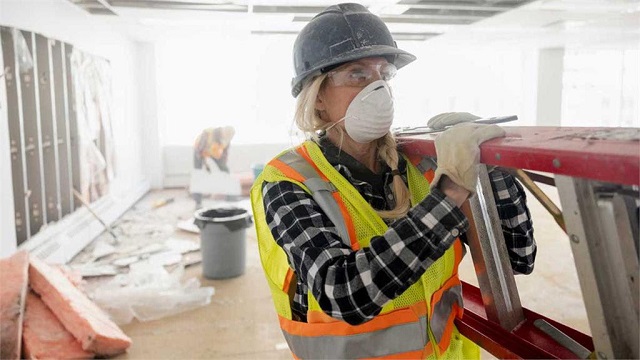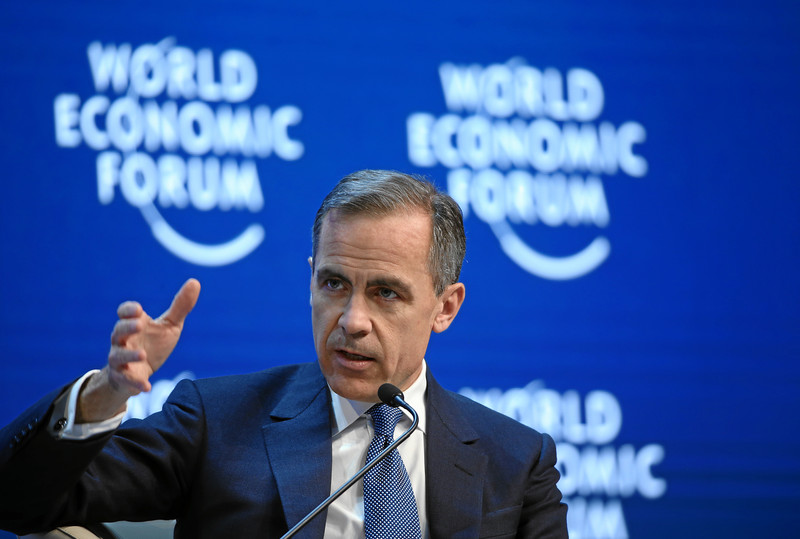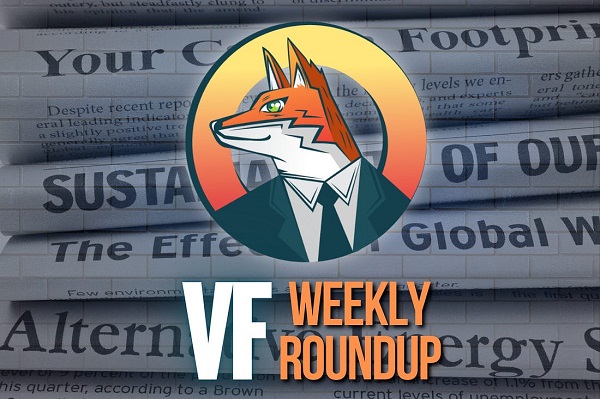Alberta
Alberta Budget 2024 – Employment

Budget 2024: Maintaining Alberta’s economic advantage
Budget 2024 is a responsible plan that maintains Alberta’s competitive advantage so businesses and industry can continue to innovate, thrive and create jobs.
Budget 2024 puts Alberta on a path of continued economic growth through funding that supports creating jobs, attracting investment and developing a skilled and diversified workforce. Strategic investments will empower job creators and innovators to invest, grow and flourish in Alberta’s diversifying economy.
“Budget 2024 reaffirms our commitment to diversify, attract new investment and provide more jobs that keep Alberta’s engine humming. Strategic investments that support the growth of Alberta cities and promote apprenticeship programming and emission reduction technology will help create more opportunities to build an even stronger Alberta.”
Alberta remains a key driver of Canada’s economic prosperity, accounting for 22 per cent of all jobs created in the country last year, despite having just 12 per cent of the population. Compared with other provinces, Alberta has the highest weekly earnings and the lowest taxes, offering many incentives to newcomers seeking a great place to call home.
To further build on these advantages, Budget 2024 introduces the Alberta is Calling attraction bonus, a $5,000 refundable tax credit aimed at attracting out-of-province workers in the skilled trades. A total of $10 million will be provided to workers.
“The Alberta is Calling attraction bonus will support our government’s commitment to build a skilled and resilient labour force that helps businesses and the economy thrive. We will continue to foster the conditions for growth to ensure Alberta remains the best place to live, work, invest, do business and raise a family.”
Budget 2024 supports the sustainable growth of Alberta’s cities and communities. In addition to $724 million in municipal infrastructure funding through the Local Government Fiscal Framework in 2024-25, Budget 2024 launches the new Local Growth and Sustainability Grant, an application-based program that provides $60 million over three years to enable municipalities to fund infrastructure that supports economic development and addresses unique and emergent needs in their communities.
“We’re pleased to see so many people choosing to move to Alberta to experience the advantages this province has to offer, thanks in part to the strong communities we are supporting through predictable, sustainable funding. We also recognize the pressure this growth can put on local communities. The Local Growth and Sustainability Grant is part of our responsible plan to support a vibrant province and help communities respond to growth opportunities and acute sustainability challenges.”
As Alberta’s economy continues to grow, so does the need to sustain a vibrant and robust workforce to meet the needs of Alberta employers. Budget 2024 addresses current and future potential labour shortages by expanding skills and knowledge in key areas.
More than $100 million in new funding for apprenticeship programs will add 3,200 seats to help meet growing demand at Alberta’s post-secondary institutions. Another $361 million from the Budget 2024 Capital Plan will build and upgrade research and learning facilities in some of the province’s world-class post-secondary institutions. Investments include $63 million to renovate and expand the W.J. Elliott agricultural mechanics building at Olds College and $55 million to increase STEM programming capacity at the University of Calgary.
“Supporting growth in Alberta’s economy means ensuring no region is left behind. Our funding commitments to STEM programming at the University of Calgary and agriculture at Olds will create new opportunities for students in our rural economy and those studying in our largest urban centre.”
The Alberta Petrochemicals Incentive Program (APIP) is helping turn the province into a top global producer of petrochemicals. The APIP provides grants to cover 12 per cent of eligible capital costs for Alberta-based petrochemicals projects. In 2023-24, three projects are expected to receive APIP grant payments totalling $116 million, helping to diversify Alberta’s economy and create jobs.
“Royalties collected from oil and gas fund the things Albertans rely on, like health, education and social services. Budget 2024 supports the government’s mission to strengthen investor confidence and support job creation in communities all while lowering emissions through the use of new technologies.”
Budget 2024 highlights
- $597 million over three years from the province’s TIER (Technology Innovation and Emissions Reduction) fund to support a suite of programs that reduce emissions, support clean technology development, enhance climate resiliency and create jobs for Albertans.
- $1.5 billion for child-care services, an increase of $200 million, enabling more Albertans with young children to participate in the workforce.
- $32 million to build three new water intakes in the Designated Industrial Zone in Alberta’s Industrial Heartland, which will support long-term private investment opportunities in the area.
- Almost $30 million over three years for the Aboriginal Business Investment Fund, an increase of nearly $8 million, to help fund business startup and expansion costs in Indigenous communities.
Budget 2024 is a responsible plan to strengthen health care and education, build safe and supportive communities, manage the province’s resources wisely and promote job creation to continue to build Alberta’s competitive advantage.
Alberta
Big win for Alberta and Canada: Statement from Premier Smith

Premier Danielle Smith issued the following statement on the April 2, 2025 U.S. tariff announcement:
“Today was an important win for Canada and Alberta, as it appears the United States has decided to uphold the majority of the free trade agreement (CUSMA) between our two nations. It also appears this will continue to be the case until after the Canadian federal election has concluded and the newly elected Canadian government is able to renegotiate CUSMA with the U.S. administration.
“This is precisely what I have been advocating for from the U.S. administration for months.
“It means that the majority of goods sold into the United States from Canada will have no tariffs applied to them, including zero per cent tariffs on energy, minerals, agricultural products, uranium, seafood, potash and host of other Canadian goods.
“There is still work to be done, of course. Unfortunately, tariffs previously announced by the United States on Canadian automobiles, steel and aluminum have not been removed. The efforts of premiers and the federal government should therefore shift towards removing or significantly reducing these remaining tariffs as we go forward and ensuring affected workers across Canada are generously supported until the situation is resolved.
“I again call on all involved in our national advocacy efforts to focus on diplomacy and persuasion while avoiding unnecessary escalation. Clearly, this strategy has been the most effective to this point.
“As it appears the worst of this tariff dispute is behind us (though there is still work to be done), it is my sincere hope that we, as Canadians, can abandon the disastrous policies that have made Canada vulnerable to and overly dependent on the United States, fast-track national resource corridors, get out of the way of provincial resource development and turn our country into an independent economic juggernaut and energy superpower.”
Alberta
Energy sector will fuel Alberta economy and Canada’s exports for many years to come

From the Fraser Institute
By any measure, Alberta is an energy powerhouse—within Canada, but also on a global scale. In 2023, it produced 85 per cent of Canada’s oil and three-fifths of the country’s natural gas. Most of Canada’s oil reserves are in Alberta, along with a majority of natural gas reserves. Alberta is the beating heart of the Canadian energy economy. And energy, in turn, accounts for one-quarter of Canada’s international exports.
Consider some key facts about the province’s energy landscape, as noted in the Alberta Energy Regulator’s (AER) 2023 annual report. Oil and natural gas production continued to rise (on a volume basis) in 2023, on the heels of steady increases over the preceding half decade. However, the dollar value of Alberta’s oil and gas production fell in 2023, as the surging prices recorded in 2022 following Russia’s invasion of Ukraine retreated. Capital spending in the province’s energy sector reached $30 billion in 2023, making it the leading driver of private-sector investment. And completion of the Trans Mountain pipeline expansion project has opened new offshore export avenues for Canada’s oil industry and should boost Alberta’s energy production and exports going forward.
In a world striving to address climate change, Alberta’s hydrocarbon-heavy energy sector faces challenges. At some point, the world may start to consume less oil and, later, less natural gas (in absolute terms). But such “peak” consumption hasn’t arrived yet, nor does it appear imminent. While the demand for certain refined petroleum products is trending down in some advanced economies, particularly in Europe, we should take a broader global perspective when assessing energy demand and supply trends.
Looking at the worldwide picture, Goldman Sachs’ 2024 global energy forecast predicts that “oil usage will increase through 2034” thanks to strong demand in emerging markets and growing production of petrochemicals that depend on oil as the principal feedstock. Global demand for natural gas (including LNG) will also continue to increase, particularly since natural gas is the least carbon-intensive fossil fuel and more of it is being traded in the form of liquefied natural gas (LNG).
Against this backdrop, there are reasons to be optimistic about the prospects for Alberta’s energy sector, particularly if the federal government dials back some of the economically destructive energy and climate policies adopted by the last government. According to the AER’s “base case” forecast, overall energy output will expand over the next 10 years. Oilsands output is projected to grow modestly; natural gas production will also rise, in part due to greater demand for Alberta’s upstream gas from LNG operators in British Columbia.
The AER’s forecast also points to a positive trajectory for capital spending across the province’s energy sector. The agency sees annual investment rising from almost $30 billion to $40 billion by 2033. Most of this takes place in the oil and gas industry, but “emerging” energy resources and projects aimed at climate mitigation are expected to represent a bigger slice of energy-related capital spending going forward.
Like many other oil and gas producing jurisdictions, Alberta must navigate the bumpy journey to a lower-carbon future. But the world is set to remain dependent on fossil fuels for decades to come. This suggests the energy sector will continue to underpin not only the Alberta economy but also Canada’s export portfolio for the foreseeable future.
-

 2025 Federal Election1 day ago
2025 Federal Election1 day agoPoilievre To Create ‘Canada First’ National Energy Corridor
-

 Health2 days ago
Health2 days agoSelective reporting on measles outbreaks is a globalist smear campaign against Trump administration.
-

 2025 Federal Election2 days ago
2025 Federal Election2 days agoMainstream Media Election Coverage: If the Election Was a NHL Game, the Ice Would be Constantly Tilted Up and to the Left
-

 International1 day ago
International1 day agoFREE MARINE LE PEN!’: Trump defends French populist against ‘lawfare’ charges
-

 2025 Federal Election2 days ago
2025 Federal Election2 days agoMark Carney is trying to market globalism as a ‘Canadian value.’ Will it work?
-

 Automotive1 day ago
Automotive1 day agoDark Web Tesla Doxxers Used Widely-Popular Parking App Data To Find Targets, Analysis Shows
-

 COVID-1922 hours ago
COVID-1922 hours agoMaxime Bernier slams Freedom Convoy leaders’ guilty verdict, calls Canada’s justice system ‘corrupt’
-

 Business1 day ago
Business1 day agoWill Trump’s ‘Liberation Day’ Tariffs End In Disaster Or Prosperity?







